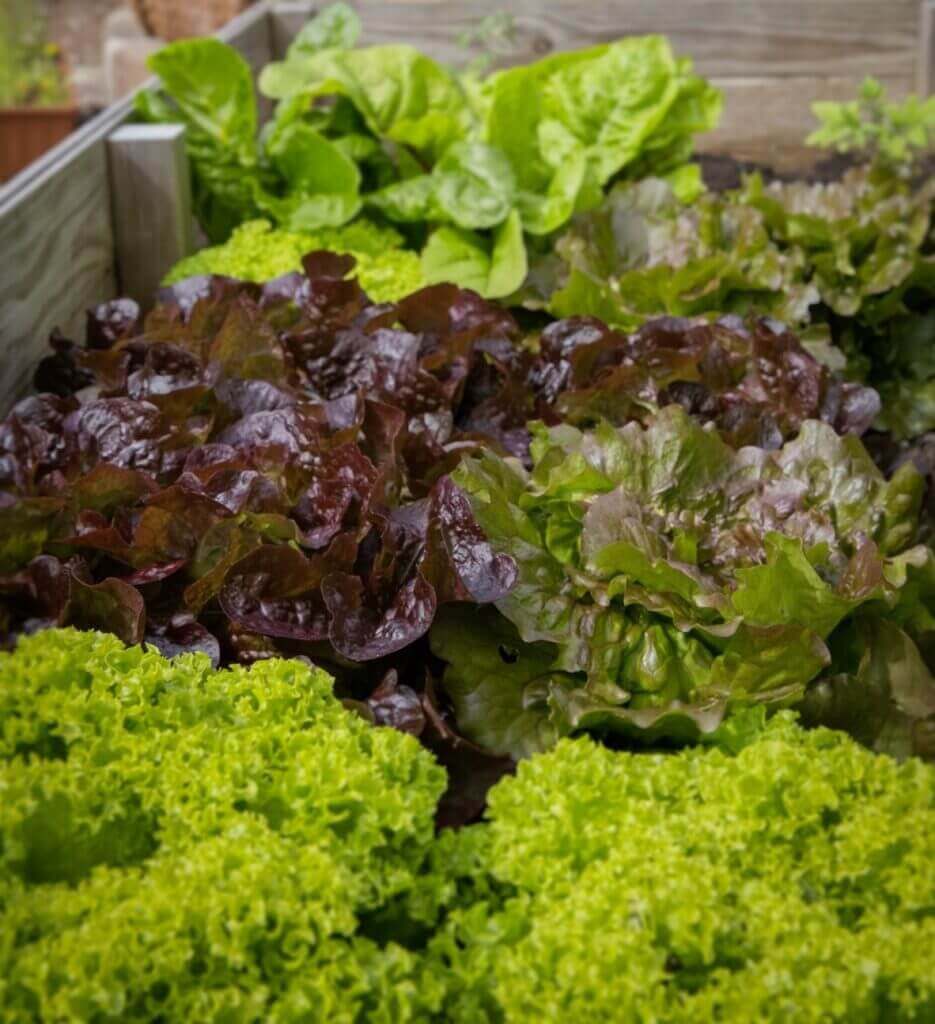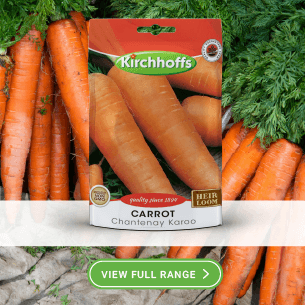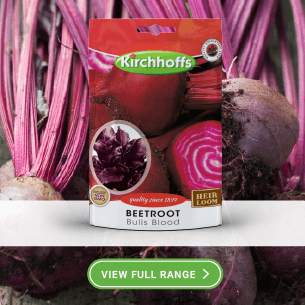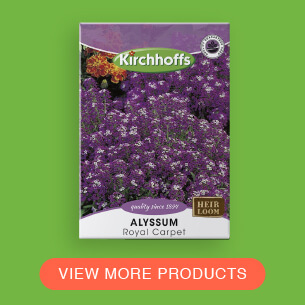Vegetables That Grow in Shade
Many gardeners simply just don’t have the space to grow a thriving full-sun vegetable garden. However, the good news is that there are vegetables that flourish in shade, and with the right knowledge and care, you can enjoy a bountiful harvest. In this article, we look at vegetable gardening in low light and reveal the top vegetables that grow in shade.
6 Vegetables That Grow in Shade
Growing vegetables in South African shade gardens can be challenging due to the country’s diverse climate, but there are several shade-tolerant options that can thrive in these conditions. Here’s a list of 10 top vegetables that grow in shade and some information about each:
1 Grow Spinach in Shade: Spinach is a versatile leafy green that loves partial shade. It’s rich in nutrients, including vitamins A and C, and a staple in many South African households. Spinach can be grown in containers or garden beds and benefits from cool, shaded spots to prevent bolting (premature flowering).
2 Grow Lettuce in Shade: Both iceberg and butterhead lettuce varieties are well-suited for shade gardens. Lettuce is a cool-season crop that can thrive in partial shade conditions. It’s perfect for salads and sandwiches, and you can succession plant for a continuous harvest or consider cut-and-come-again varieties.
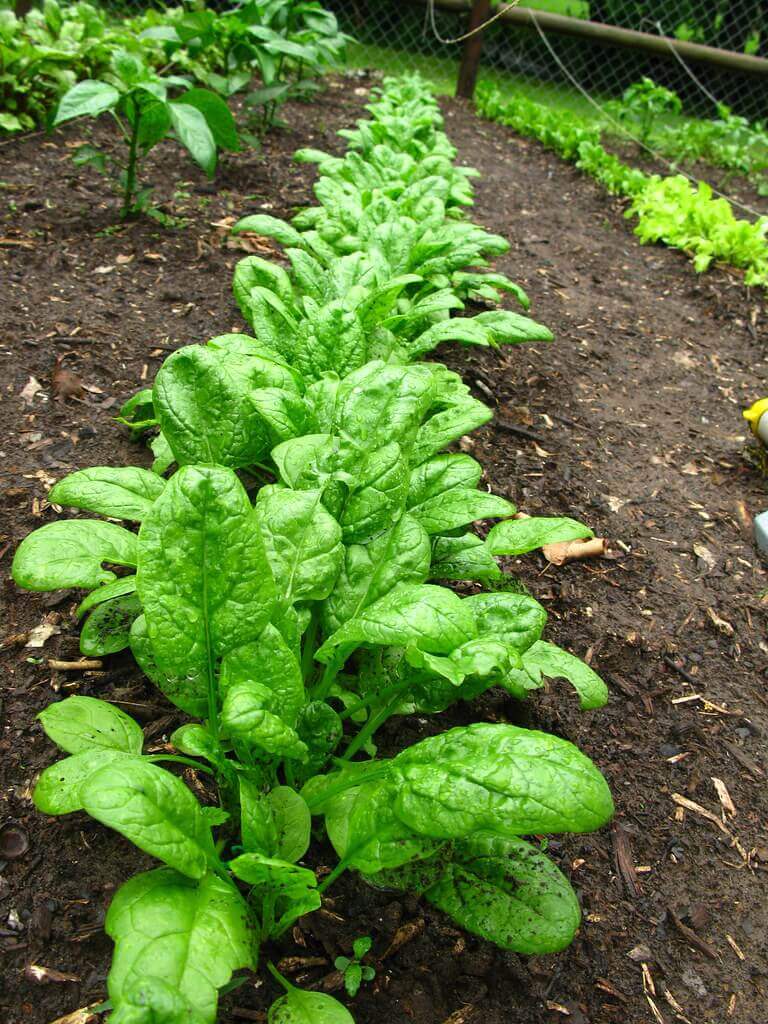
3 Grow Kale in Shade: Kale is a nutritional powerhouse and an ideal choice for South African shade gardens. It’s packed with vitamins and can tolerate less sunlight than some other leafy greens. Varieties like curly kale and lacinato kale (also known as dinosaur kale) can be grown in partial shade.
4 Grow Swiss Chard in Shade: Swiss chard is a robust and hardy plant that can handle partial shade. It adds color to your garden with its vibrant stems and can be used in salads or cooked as a nutritious side dish. It’s more heat-tolerant than spinach and lettuce, making it suitable for South African climates. Consider the Bright light varieties for some special colour in your shaded vegetable garden.
5 Grow Radishes in Shade: When cultivating radishes in South African shade gardens, opt for shade-tolerant varieties like French Breakfast or Sparkler. Sow the seeds directly into well-drained, organic-rich soil, spacing them as recommended on the seed packet. Radishes can handle partial shade and might take a bit longer to mature, but with consistent moisture and proper care, they can be ready for harvest in just a few weeks.
6 Grow Beets in Shade: Beets are another option for shade gardens, provided you select shade-tolerant varieties like “Bull’s Blood” or “Chioggia.” Sow beet seeds directly into loose, well-prepared soil with organic matter, adhering to spacing recommendations. Beets can tolerate partial shade, though their growth may be slightly slower, and their roots may take a bit longer to reach maturity. Regular watering and thinning as they grow can help produce tender and tasty roots and leafy greens for your meals.
Herbs That Grow in Shade:
You can also have a look at growing these herbs alongside your shaded vegetable garden
Grow Cilantro AKA Coriander in Shade: Cilantro is a must-have herb for many South African dishes and is well-suited for partial shade gardens. It prefers cooler conditions and can thrive in shadier areas, especially during hot summer months. Harvest the leaves for a fresh and zesty flavor.
Grow Mint in Shade: Mint is a hardy herb that thrives in both shade and sunlight. It’s perfect for adding flavor to your dishes and beverages. Mint can be invasive, so it’s often best to grow it in containers to prevent it from taking over your garden. Varieties like spearmint and peppermint are popular choices.
Grow Arugula AKA Rocket in Shade: Known for its peppery flavor, arugula is another shade-loving leafy green that’s easy to grow. It’s a great addition to salads and can be harvested continually throughout the growing season. Arugula is a cool-season crop and can handle shade as it prefers milder temperatures.
These are some of the top vegetables and herbs that can thrive in South African shade gardens. It’s important to pay attention to the specific microclimate in your garden, as shade conditions can vary. Additionally, ensure proper soil preparation, watering, and maintenance to help these shade-loving plants flourish in your garden.
Tips when growing vegetables in shade
Understanding the Shade Spectrum and Risks of Growing Vegetables in Shade
Shade gardening begins with understanding the different types of shade: light, partial, and full shade. Light shade provides dappled sunlight throughout the day, partial shade offers some direct sunlight at specific times, and full shade means no direct sunlight at all. To successfully grow vegetables in the shade, you need to choose the right varieties that can thrive in these conditions. Selecting shade-tolerant vegetables is crucial.
While some leafy greens and root vegetables can tolerate partial shade, there are several risks and challenges associated with growing vegetables in shady conditions, keep the following in mind when considering vegetables that grow in shade:
To mitigate the risks associated with vegetables that grow in shade, consider the following strategies:
Choose Shade-Tolerant Vegetables: Select vegetable varieties that are known to tolerate shade to some extent, such as leafy greens (lettuce, spinach), some herbs (mint, cilantro), and certain root vegetables (radishes, beets). These will have a better chance of success in shady conditions.
Provide Some Light: Do what you can to increase the amount of available light in the shaded area, trim tree branches overhead, or aim for the spots of dappled shade rather than trying to grow vegetables in full shade.
Improve Soil and Drainage: Make sure the soil in the shaded area is rich in organic matter and well-draining to ensure that the vegetables receive the necessary nutrients and moisture, but don’t need to compete with waterlogged soil as well as low light.
Monitor for Pests and Diseases: Be vigilant in monitoring for pests and diseases, as shaded areas are more prone to these issues. Consider organic pest control methods to manage any problems that arise.
Risks of vegetables that grow in shade:
Reduced Photosynthesis: Sunlight is essential for photosynthesis, the process by which plants convert sunlight into energy to grow and produce food. Inadequate sunlight in the shade can lead to reduced photosynthesis, stunting the growth of plants and limiting their ability to thrive.
Slower Growth: Vegetables grown in the shade typically grow more slowly than those grown in full sun. This can lead to smaller plants and delayed harvests, but it definitely should not deter you from growing shade vegetables.
Lower Yields: The reduced photosynthesis and slower growth can result in lower yields, as the plants may not produce as they would in full sun.
Increased Disease Susceptibility: Shaded areas often have higher humidity and reduced airflow, which can create conditions favorable for fungal diseases and pests. Vegetables in shade may be more susceptible to diseases like powdery mildew and issues like slug infestations.
Leggy Growth: In an attempt to reach for more light, vegetables grown in the shade may become leggy, meaning they produce long, spindly stems with fewer leaves. This can weaken the plant’s structure and make it more prone to damage from wind and pests. Try to avoid growing vegetables in full shade, a little light will go a long way to reduce leggy growth.
Nutrient Deficiency: Reduced sunlight can also affect the plant’s ability to take up essential nutrients from the soil. This may result in nutrient deficiencies and poor overall health.
Limited Crop Variety: Many popular vegetable varieties are specifically bred for full-sun conditions. While some leafy greens like lettuce and spinach can tolerate partial shade, you may have limited options for what you can grow in the shade, we will share and discuss these in detail in the article below.
To increase your chances of success, choose shade-tolerant varieties, provide some light, and maintain optimal soil conditions while monitoring for pests and diseases.








